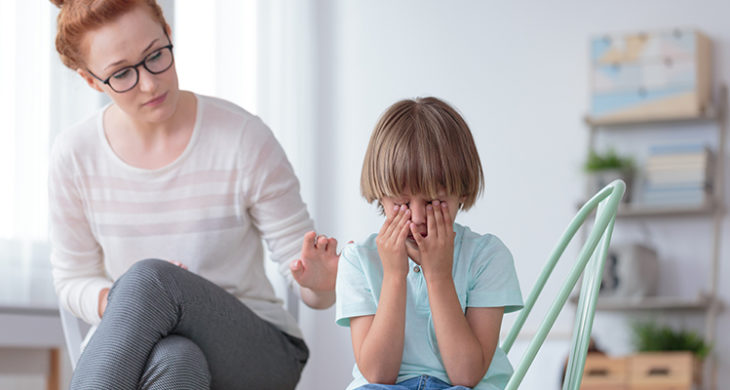Most of us are born with five senses, which we rely on to understand, react to, and exist comfortably in the world: seeing, hearing, tasting, feeling, and smelling. But some people’s brains process sensory input in an unusual way that causes discomfort, distress, and confusion. When the latter happens, and sensory signals are misinterpreted by the nervous system, that is called Sensory Processing Disorder (SPD).
Screaming with pain when someone accidentally brushes against their skin, retching when confronted by the smell of cookies baking in the oven, crying inconsolably by the sound of a book accidentally dropped on the floor—these are all examples of reactions kids with Sensory Processing Disorder might have.
Perhaps because sensory processing disorder is not currently recognized as a distinct medical diagnosis, there is not a lot of research available on this condition. One study followed kids born between July 1995 and September 1997. During that period, 16 percent (one out of six) of 7- to 11-year-olds exhibited symptoms. The disorder, also referred to as Sensory Integration Disorder, Sensory Integration Dysfunction (SI Dysfunction), and Dysfunction in Sensory Integration (DSI) is primarily identified in kids but also may affect adults. Many children who develop the disorder may have been described as “fussy” when they were infants.
Telltale Signs and Symptoms
Signs that a child may have sensory processing disorder include exhibiting hypersensitivity (being overly sensitive to stimuli), hyposensitivity (being under-sensitive to their senses), or a combination of both. The following are symptoms to watch for.
Hypersensitive kids are easily overwhelmed. They may:
- Have strong negative reactions (meltdowns) to changes in the status quo, such as leaving home to going to a crowded shopping mall
- Refuse to wear clothes because they feel “itchy” or shoes because they feel “too tight”
- Become distracted by background noise others don’t notice
- Be unaware of the amount of force they’re exerting—ripping the paper as they’re erasing pencil marks
- Appear clumsy, because they have trouble understanding their body in relation to objects or people
Hyposensitive children kids crave sensory input so they seek stimulation. They may:
- Touch people or objects even when it’s not appropriate
- Seem to disregard others’ personal space
- Seem immune to pain
- Be overly fidgety and unable to sit still
- Not understand their own strength and inadvertently hurt other kids
- Love jumping, spinning, and intense movements
What to do if your child might have SPD?
As indicated above, every child’s sensory processing disorder is unique. The first step toward recovery is to have your child evaluated by a therapist with specific training in sensory integration. Not all therapists recognize this as a legitimate disorder, so finding the right therapist is key.
In most cases, an occupational therapist will lead your child’s treatment sessions. In a controlled environment, the therapist will gently expose your child to the stimuli he or she is having trouble with, and teach them coping skills to help them gradually become more tolerant. Typically, therapists work to make the sessions seem “fun” and may mimic play therapy. The concept behind this immersive therapy is that the brain can change based on experiences.
Therapy is usually most effective when parents also participate at home; depending on your child’s unique triggers, a therapist may recommend strategies you can employ to mitigate symptoms. For example, encourage a child who is overly sensitive to light to wear sunglasses or encourage a child who is sensitive to smells to carry an object in their pocket that is saturated in a scent they likes (they can hold that up to their nose to offset offensive smells.)
With skilled help from a therapist, over time your child can “retrain their brain” and learn to release the limiting manifestations of this disorder.
,










